Loew's Valencia Theatre
Introduction
Text-to-speech Audio
Images
The Valencia in the 1920s (http://www.scoutingny.com/)
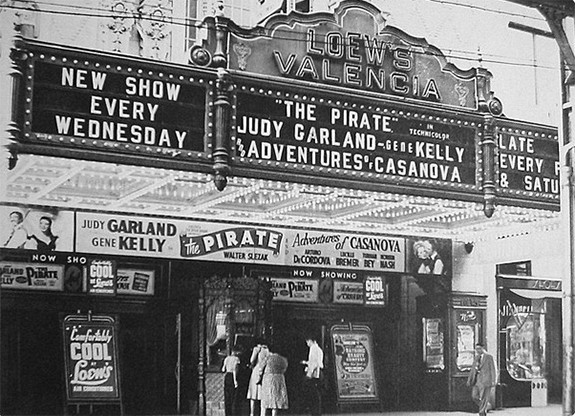
Valencia exterior (http://www.scoutingny.com/)
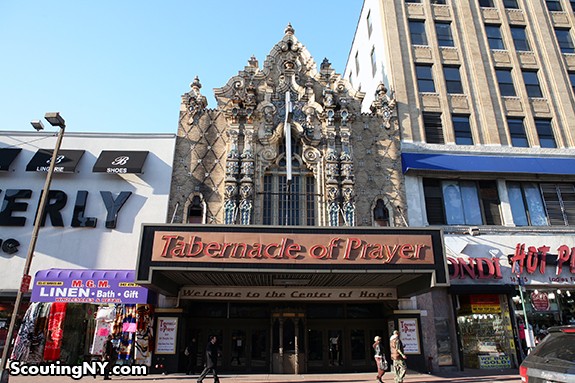
The original ticket booth (http://www.scoutingny.com/)
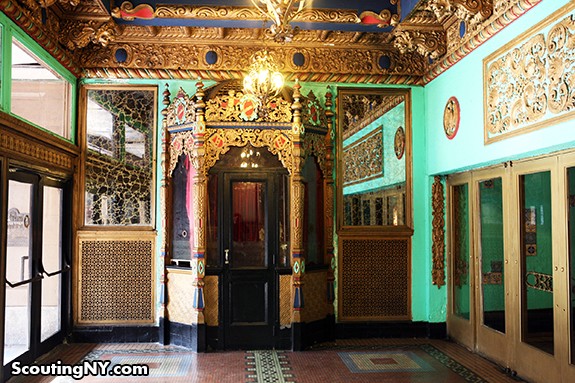
The foyer before entering the movie hall (http://www.scoutingny.com/)
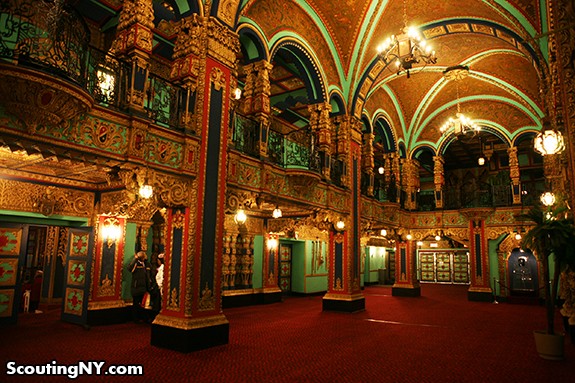
The movie hall, facing the stage (http://www.scoutingny.com/)
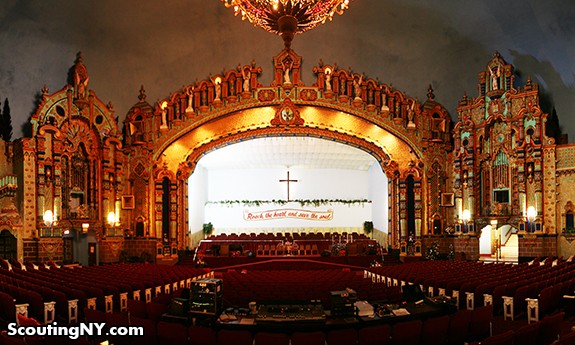
The movie hall, facing away from the stage (http://www.scoutingny.com/)
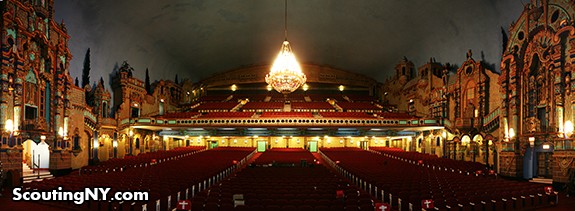
Details of the side walls (http://www.scoutingny.com/)
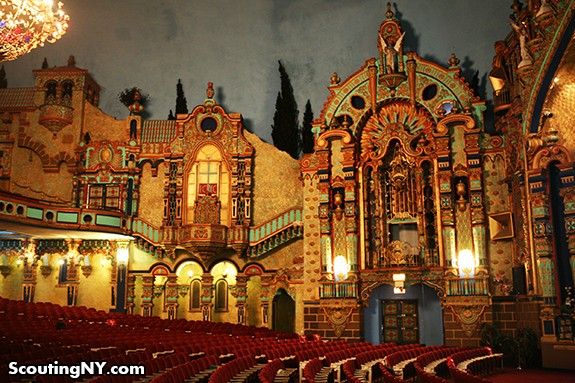
Backstory and Context
Text-to-speech Audio
In the early 1900s, going to the movies became a popular recreational activity. The film craze started with silent movies shown in nickelodeons – so called as they only charged five cents for tickets. From 1935, Technicolor films led to a growth in theatres across the country, though they were generally smaller. It was between these two periods that the unique movie palaces of the 1920s were built. These enormous and lavishly decorated movie theatres were designed around many different themes, from Oriental temples to Parisian salons, Spanish towns to Egyptian tombs.
Marcus Loew was born in 1870, in the Lower East Side, to immigrant Austrian Jewish parents. In 1904, he started investing in his own penny arcades and opened his own on West 23rd Street the following year which later became a nickelodeon. He directed himself towards a career in the movie business, especially after 1909 when he acquired the Yorkville and Lincoln Square theatres from the Shubert family – the family responsible for the growth of Broadway – in which he showed vaudeville and film performances. Loew’s Theatres was founded by Marcus in 1904, through funding provided by the Shuberts. He was one of a number of entertainment magnates in New York, including Benjamin Franklin Keith, Edward Franklin Albee, William Fox, Barney Balaban, and the Katz brothers. Loew’s became one of the USA’s largest movie theatre chains and would eventually spread across the globe in the form of Loews Cineplex Entertainment – also known as AMC Theatres. Marcus Loew would also go on to establish Metro-Goldwyn-Mayer Studios in 1924, which would release Ben Hur the following year and become a world-renowned film company.
Marcus passed away in 1927, leaving behind a company at the height of its success to his partner, Nicholas Schenck. In 1929, Schenck constructed five new theatres around the city, one of which was the Valencia movie palace on Jamaica Avenue. Schenck commissioned John Eberson, a specialist “atmospheric movie theatre” architect, to design the building, which cost more than two million dollars to complete. It features an ornate “Churrigueresque” (Spanish baroque) brick and terracotta façade, covered in decorative cherub busts and naturalistic ornamentation.
Inside, visitors can admire the exotic framework of buildings, statues, balconies, and screens surrounding the central stage and stretching across the side walls. The entire room gives the sense of being outside in a fantasy landscape, an effect accentuated by the ceiling of twinkling stars, caused by the clever use of lighting. The Tabernacle of Prayer has made minimal changes to the interior; the most significant of which has been to “sanctify” the nude statues by giving them clothes and angel wings. The original organ has been removed and is now in the Balbao Theatre, San Diego, California.
Cite This Entry
Thagard, Gavin, Tomas Skinner, and Clio Admin. "Loew's Valencia Theatre." Clio: Your Guide to History. June 15, 2017. Accessed April 14, 2025. https://theclio.com/entry/22199
Sources
"Loew's Valencia Theatre." New York. Accessed Web, 6/15/17. http://s-media.nyc.gov/agencies/lpc/lp/2036.pdf.
"Loew's Valencia Theatre." Cinema Treasures. Accessed Web, 6/15/17. http://cinematreasures.org/theaters/903.
Carlson, Jen. "Take A Tour Of The Gorgeous Old Loew's Valencia Movie Palace." Gothamist. 5/23/14. Accessed Web, 6/15/17. http://gothamist.com/2014/05/23/loews_valencia_movie_palace.php.
"The Queens Movie Theater You Will Not Believe." Scouting New York. 1/28/13. Accessed Web, 6/15/17. http://www.scoutingny.com/the-queens-movie-theater-you-will-not-believe/.

